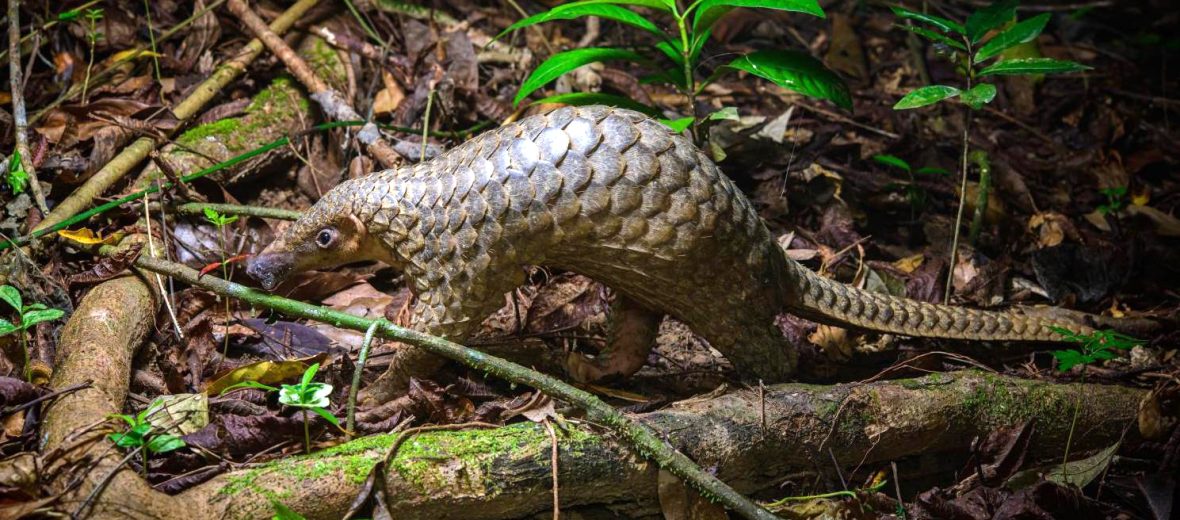
The Sunda pangolin, aka Javan pangolin or Malayan pangolin, is found in southeast Asia, in places like Borneo, Brunei, Cambodia, Java, Laos, Malaysia, Myanmar, Sumatra, the Lesser Sunda Islands, Singapore, Thailand, and Vietnam. They prefer primary forests, secondary forests, scrub forests, gardens, oil palm plantations, and rubber plantations. Unfortunately, due to the threats of habitat destruction at the hands of housing and urban developments, roads and railroads (which can result in vehicle strike – being hit with vehicles, and habitat division), logging, dams and water management tactics; hunting; and trapping, these amazing creatures are listed as Critically Endangered by the IUCN. Their numbers are also decreasing.
First the Stats…
Scientific name: Manis javanica
Weight: Up to 11 lbs.
Length: Up to 25.59 inches, plus up to a 22.44 inch tail
Lifespan: Up to 20 years
Now on to the Facts!
1.) Their organs, flesh, and scales are collected and used for traditional medicine. However, as is the case in most traditional medicine, it has never been proven to aid in any cure of any disease or ailment.
2.) Pangolins have poor eyesight, but an amazing sense of smell.
3.) These pangolins eat ants and termites exclusively.
4.) They are primarily arboreal (spend most of their lives in trees).
5.) Sunda pangolins are nocturnal (active at night).
But wait, there’s more on the Sunda pangolin!
6.) The Sunda pangolin is a solitary creature but can sometimes be found paired with a female.
7.) Even though they typically move very slowly and methodically, they are capable of moving quickly, if pursued by a predator.
Did you know…?
It is estimated that a single adult pangolin can consume an incredible 70 million insects each year!
8.) They can also swim quite well.
9.) These critters are believed to be polygynous (1 male mates with multiple females).
10.) Females undergo up to a 130 day gestation (pregnancy) that yields up to 2 pangopups.
But wait, there’s still more on the Sunda pangolin!
11.) The pangopups weigh up to 17.64 ounces at birth.
12.) The extremely protective mother pangolin nurses her pangopups for up to 3 months.
Did you know…?
Even though these creatures are protected, the Chinese illegal trade demands fetch a heavy price for their collection, for many uses, such as traditional medicine, meat, and jewelry – made from the pangolin scales. So, sadly, their exploitation and subsequent demise continues.
13.) Pangopups will often ride on mom’s tail, as she traverses the forest in search of food.
14.) When cornered, they will stand on their hind legs and slash with their forelimb claws. If that doesn’t work, they will curl up into a ball to protect their soft underbelly.
15.) Tigers, clouded leopards, and humans are their primary predators.
Now a Short Sunda Pangolin Video!
This video talks about pangolins in general.
Be sure to share & comment below! Also, check out the Critter Science YouTube channel. Videos added regularly!
Want to suggest a critter for me to write about? Let me know here.
Some source material acquired from: Wikipedia & IUCN
Photo credit: Thai National Parks



